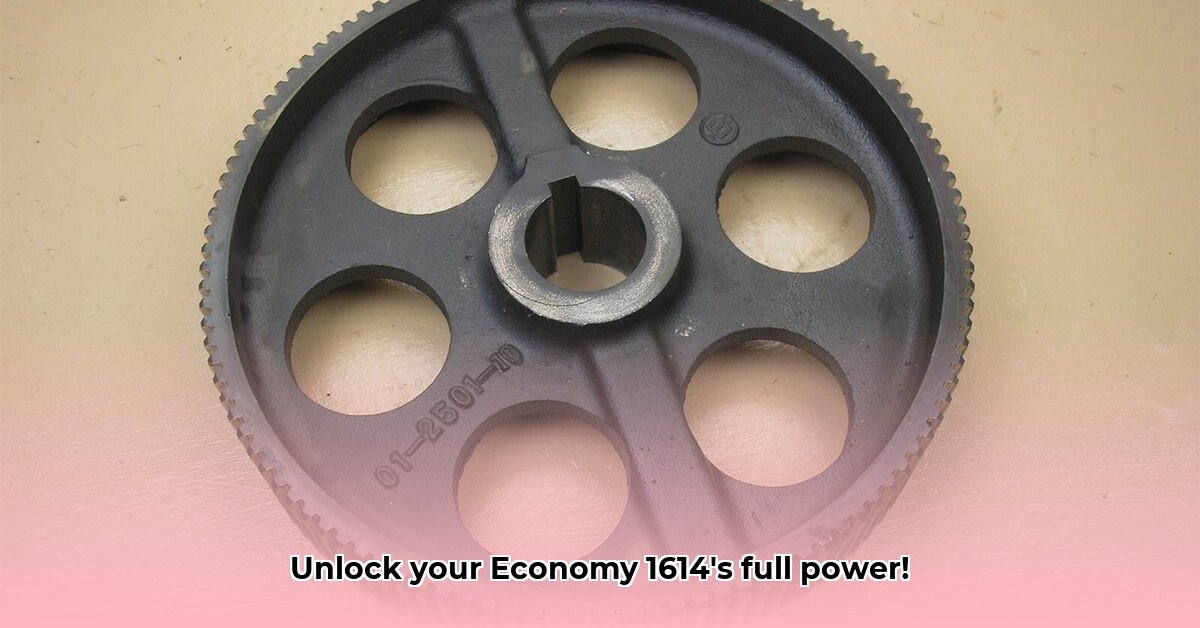
Is your Economy 1614 tractor running rough, starting hard, or guzzling fuel? These issues often stem from neglected carburetor and air filter maintenance. This guide provides a step-by-step approach to cleaning your carburetor and replacing your air filter, leading to improved fuel economy, increased engine power, and a longer lifespan for your tractor. For more information on tractor solenoids, see this helpful resource. Let's get your 1614 performing at its peak!
Getting Started: Tools & Supplies
Before you begin, gather these essential tools and supplies. Having everything ready will make the process smoother and safer.
| Item | Description | Notes |
|---|---|---|
| Screwdrivers (Phillips & Flathead) | Various sizes for removing carburetor and air filter housing screws. | Ensure you have the correct sizes to avoid stripping screw heads. |
| Wrench Set | Metric wrenches for loosening and tightening nuts and bolts. | Having the correct sizes is crucial for a smooth and efficient job. |
| Pliers | For holding small parts or bending wires. Needle-nose pliers are especially useful. | |
| Cleaning Brush | Stiff-bristled brush (an old toothbrush works well) for cleaning carburetor jets. | |
| Compressed Air | To blow out dust and debris. | Wear safety glasses and a respirator for protection. |
| Carburetor Cleaner | Specifically formulated for carburetors; avoid damaging chemicals. | Follow the manufacturer's instructions carefully. |
| New Air Filter | Correct type and size for your Economy 1614. Check your owner's manual. | Use only approved replacement parts for optimal performance. |
| Rags/Shop Towels | For wiping down parts and cleaning up spills. | Have plenty on hand! |
| Fuel Line Disconnect Tool | To disconnect fuel lines safely and prevent leaks. | Incorrect tools can cause damage and leaks. |
| Gloves | Protect your hands from grease, fuel, and dirt. | Safety first! |
Cleaning Your Economy 1614 Tractor Carburetor
A clean carburetor ensures the proper fuel/air mixture for efficient combustion. Neglecting this vital component leads to poor performance and fuel waste. Don't you want to maximize your tractor's efficiency, saving both money and time?
Safety First: Disconnect the spark plug wire before working near the fuel system to prevent accidental starting.
Fuel Line Disconnection: Carefully disconnect the fuel line from the carburetor. Have a clean rag ready to absorb any spilled fuel.
Carburetor Removal: Remove the carburetor from the engine, taking photos as you go to aid reassembly. This step might require some mechanical experience or referring to your tractor’s manual.
Disassembly and Cleaning: Gently disassemble the carburetor. Clean each part thoroughly using the brush and carburetor cleaner, paying special attention to jets and passages. Use compressed air to remove any remaining debris.
Reassembly and Reinstallation: Reassemble the carburetor carefully, ensuring all parts are correctly positioned. Reinstall it onto the engine, double-checking all connections. Reconnect the fuel line securely, checking for leaks.
Replacing Your Economy 1614 Tractor Air Filter
A clogged air filter restricts airflow, reducing engine power and increasing fuel consumption. Replacing it is a simple, yet highly effective maintenance task. Is your tractor's performance suffering? A clogged air filter could be the culprit!
Locating the Air Filter Housing: The air filter housing is usually near the carburetor.
Removing the Housing: Remove the air filter housing using the appropriate tools (usually screws or clamps).
Installing the New Filter: Carefully install the new air filter, ensuring it fits snugly and is correctly seated.
Replacing the Housing: Securely reattach the air filter housing.
Troubleshooting: Common Issues & Solutions
Even with regular maintenance, problems can arise. Here are some common issues and their solutions:
Problem: Engine struggles to start or runs roughly. Possible Causes: Dirty carburetor, clogged air filter, fuel delivery issues, or ignition problems. Solution: Start by checking the air filter and cleaning or replacing the carburetor, as outlined above. If the problem persists, consult a qualified mechanic.
Problem: Poor fuel economy (increased fuel consumption). Possible Causes: A clogged air filter, reducing airflow and causing the engine to work harder. Other factors include tire pressure, terrain, and the general condition of the engine. Solution: Clean or replace the air filter. Address other contributing factors as necessary.
Problem: Engine backfires or makes unusual noises. Possible Causes: More serious internal engine issues. Solution: Do not attempt self-repair; contact a qualified mechanic immediately.
Preventative Maintenance Schedule
Regular maintenance significantly extends the lifespan of your tractor and prevents major repairs. Implement this simple schedule:
Air Filter: Inspect monthly. Replace annually, or sooner if noticeably dirty.
Carburetor: Inspect annually; clean every two years or more often if performance issues arise.
How to Prevent Economy 1614 Tractor Carburetor Leaks
Carburetor leaks can severely impact your tractor's performance and lead to costly repairs. Preventative maintenance is key!
Safety First: Disconnect the spark plug wire before working near the fuel system.
Fuel Line Disconnection: Carefully disconnect fuel lines; have a rag ready to absorb spills.
Carburetor Removal & Disassembly: Remove and disassemble the carburetor, carefully noting the order of parts. Take photos!
Thorough Cleaning: Clean all parts with carburetor cleaner and brushes; pay attention to jets and passages.
Gasket Inspection & Replacement: Replace any worn or damaged gaskets.
Reassembly & Reinstallation: Reassemble and reinstall the carburetor, checking all fuel lines for leaks.
Air Filter Maintenance: Regularly clean or replace the air filter, as a clogged filter contributes to fuel system problems.
Troubleshooting Carburetor Problems:
- Rough Idling/Stalling: Check for clogged fuel filters, air leaks, or carburetor idle adjustment issues.
- Flooding: Possible faulty float or needle valve; adjust float level or replace as needed.
- Fuel Leaks: Inspect gaskets for damage; check fuel lines for cracks; replace components if needed.
Remember: Regular maintenance saves money and keeps your Economy 1614 running smoothly. If you are unsure about any repair, seek professional help.